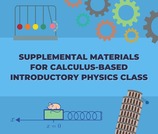
Activity for HIST 1301: United States History I (Module 10)
- Subject:
- U.S. History
- Material Type:
- Activity/Lab
- Author:
- Jessica Herzogenrath
- Kaitlyn Ross
- Date Added:
- 11/09/2022

Activity for HIST 1301: United States History I (Module 10)

Activity for HIST 1301: History of the United States 1 (Module 11)

Activity for HIST 1301: United States History I (Module 13)

Activity for HIST 1301: United States History I (Module 14)

Activity for HIST 1301 United States History I (Module 1)

Activity for HIST 1301 United States History I (Module 3)

Activity for HIST 1301 United States History I (Module 3)

Activity for HIST 1301 United States History I (Module 4)

Activity for HIST 1301: United States History I (Module 5)

Activity for HIST 1301 United States History I (Module 5)

Activity for HIST 1301: United States History I (Module 6)

Activity for HIST 1301: United States History I (Module 7)

Activity for HIST 1301: United States History I (Module 8)

Activity for HIST 1301: United States History I (Module 9)

The resources available here for HIST 1301 United States History I are part of the Digital Design for Student Success (D2S2) project, a collaboration between the Texas Higher Education Coordinating Board (THECB), Rice University, Texas A&M University and the University of Texas. The materials available as part of this course include Guiding Questions, Lectures, engaged learning Activities, project-based Assessments, and Additional Resources for instructors. Incorporate these resources in any model -- face-to-face, online (asynchronous or synchronous), or hybrid -- as either the basis for an entire semester or as a menu from which you choose elements to supplement your course.


This toolkit is intended as a guide for students who are engaging in open pedagogy. The toolkit defines open pedagogy, the benefits of open pedagogy, and the rights and responsibilities that come with being a student creator. Instructors may wish to use this toolkit as a resource to scaffold conversations about open pedagogy with their students and to appropriately prepare them for working in the open.

The modules posted below aim to provide digital resources for students and instructors. Providing students on-demand digital, multimedia, open-access resources which can be watched repeatedly at convenient times can serve as one path to improving student success in introductory physics courses The modules have been created for each topic covered in calculus-based introductory physics courses. Each module includes:Videos reviewing the laws and concepts, and videos with step-by-step problem solving providing students with additional aid in learning the material. (i) Review Videos summarize major topics after students had encountered them in class and highlight their application to common and significant problems. This resource incorporates explanations, derivations, and demonstrations to illustrate a concept; (ii) Problem-Solving Videos present detailed solutions to multi-step questions which students might encounter when working through textbook problems or on major summative assessments. This in-depth approach was structured to guide students in improving their problem-solving skills and techniques, as well as address common mistakes. More than one hundred videos have been created for different types of learners. This is a resource for both students and instructors.Textbook-independent homework problem sets that could be implemented via LMS. The homework has a mix of multiple-choice and free-response problems aiming to develop student critical thinking. Detailed solutions to all problems are provided so that the students can compare their results with the solution, or an instructor can understand what was intended for the solution if modification of the problem is desired. This is a resource for both instructors and students. Video demonstration experiments for each topic that will allow the instructors around the State of Texas to bring physics experiments to their classrooms (instructor resource). The videos merely show the experiment taking place without any explanation of the underlying physics. This gives the instructor complete freedom to tailor the explanation to their class. A text with a brief description of the experiments is provided.


Video demonstration experiments show the laws and concepts in action.